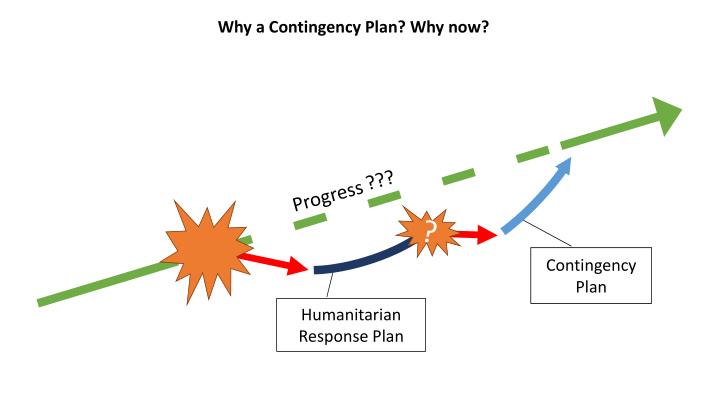



Why a Contingency Plan? Why now? Contingency Plan Humanitarian Response Plan
Crisis preparedness and contingency… • Ongoing crisis • Changes in the situation • Possible escalation of the conflict • More cities affected • More affected people… similar to last year … perhaps 1,2 million • More displaced people What does this mean for education?
Risks & consequences for education School closure in the immediately affected areas. Damage to and destruction of schools, kindergartens etc. Increased contamination of mines and UXOs near schools/villages. Displacement – increased influx of school and KG children to neighbouring Oblasts - may stress an already overstretched system. Increased tensions between displaced and hosting communities. Increased psychosocial stress for boys and girls.
Risks and consequences for education Final exam period for 9 th and 11 th year graduates may be disrupted. Teachers, school psychologists and social pedagogues will be displaced – loss of documents. Teachers, school psychologists and social pedagogues experience increased workload. School administration will be stressed and stretched. How many students will be affected and are we prepared?
Numbers - calculations & assumptions Expected Children school Children pre- AFFECTED Individuals Children age - 6 to 16 school age - 3 to Total LEARNERS…. affected (IDPs affected years (61% of 5 years (16% of (School+Pre- & remaining (25%) total affected total affected school) pop) children) children) 1,200,000 300,000 183,000 48,000 231,000 Assumed displaced (61% of total) 732,000 183,000 111,630 29,280 140,910 Assumed remaining pop (39%) 468,000 117,000 71,370 18,720 90,090
ACTIVITIES – FIRST 3 MONTHS TARGET COST PER BENEFICIARY • 39% of total of 183,000 in affected 2900 teachers for 3 weeks – USD 137 per 1. Provision of life-saving messages and areas assumed to remain = teacher psychosocial support through non-formal • 71,370 children 71370 student meals for 3 weeks – USD education for unenrolled children in summer- 90 per student camps • 2. Mine risk education targeting learners 231,000 children USD 1 per learner/teacher (leaflet/poster) • 3. Psychosocial support for teachers and other 7320 teachers (school 1:25) Cost of 2 days training 480 teachers (KG 1:100) education personnel • 4. Training of teachers & educational staff on the 231,000 children Cost of 2 days training provision of psychosocial support to learners. • Assumed 34% damage of schools in Plastic sheets/repair cost per roll = USD 5. Temporary repairs to educational infrastructure affected areas = 321 schools 150 inclusive of wash. • Hygiene kit – USD 10 per learner/teacher • 34% of remaining students in affected Water truck: 10 L per person@day for 1 areas (90,090) assumed = 30,630 month - USD 10 per learner/teacher. • 231,000 USD 3 per child 6. Supply education kits & ECD kits.
Gaps & constraints – address them in advance Gap & Constraint What do we do about it? Funding Partners develop proposals for donor funding Warehouse Preposition stock/education materials Map IDP movement patterns to identify potential IDP hosting schools Monitor/maintain list of school damages Immediate development of MRE training programmes Currently being developed Immediate identification of suitable MRE trainers Currently being developed
Stock (h (how much?) & warehouses (w (where?) Organisation Provision of non MRE PSS to teachers Training of Temp repair of Edu & ECD kits formal education and edu teachers to infrastructure in summercamps personnel provide PSS ADRA DRC/DDG Save the Children YMCA UNICEF Human Home Ukrainian Frontier
Recommend
More recommend